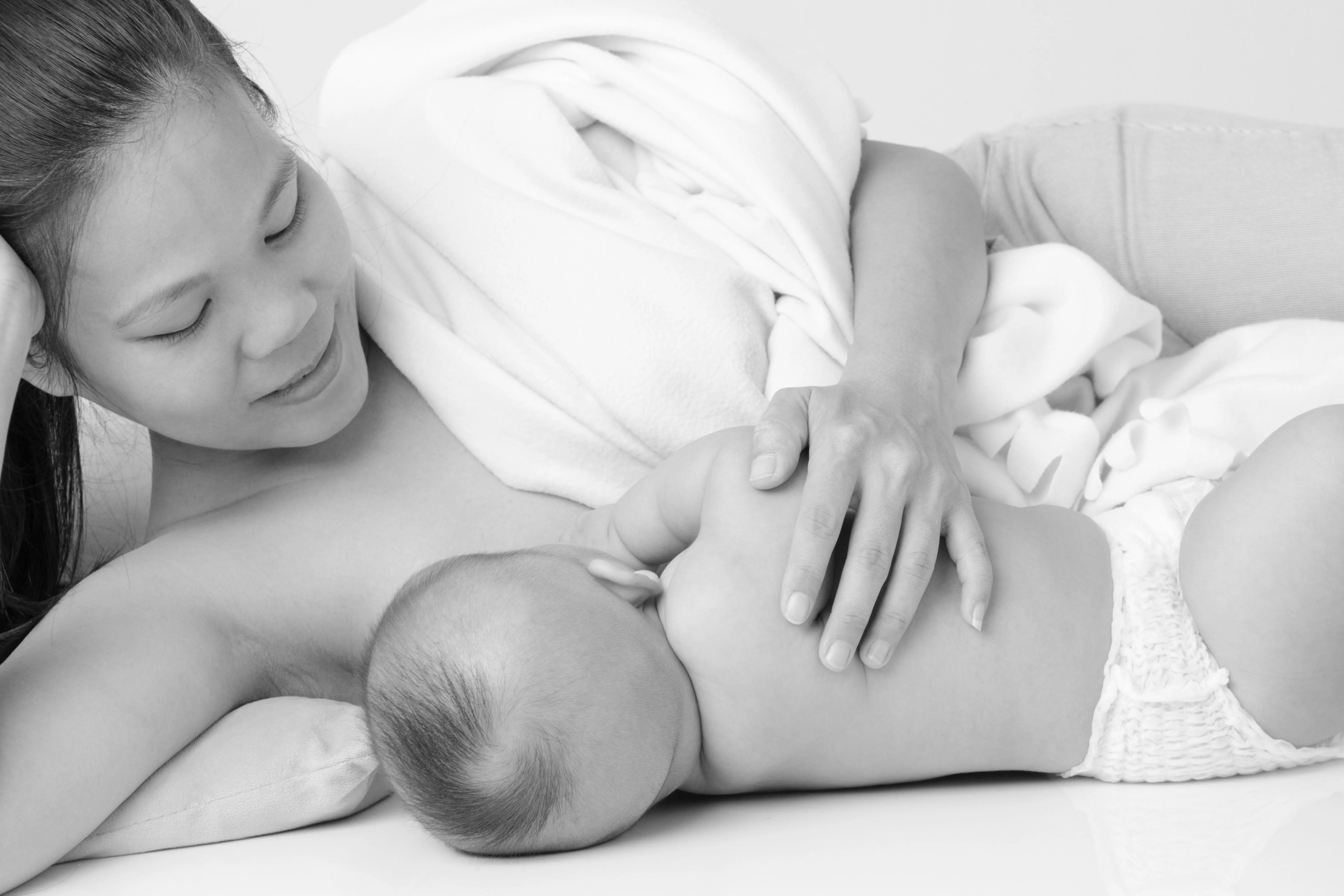
Breastfeeding is a beautiful journey that a mother embarks on with her newborn. It’s a unique bonding experience that provides immense health benefits to both the mother and the baby. However, one of the challenges that new mothers often face is finding the right breastfeeding position that ensures comfort and a good latch for effective feeding. This article will explore various breastfeeding positions used, their pros and cons, and tips for successful breastfeeding.
Importance of a Good Breastfeeding Position
Choosing a good breastfeeding position is crucial for both the mother and the baby. It can significantly impact the breastfeeding experience and determine how well the baby feeds. Here’s why a good breastfeeding position is so important:
Promotes Proper Latching
A good breastfeeding position allows the baby to latch onto the breast properly. A proper latch is when the baby’s mouth covers not just the nipple but also a large part of the areola. This ensures that the baby’s mouth can effectively draw out milk and get the necessary nutrition. A poor latch, on the other hand, can lead to inadequate feeding and issues like nipple pain and damage.
Ensures Comfort
Breastfeeding can be a lengthy process, especially in the early days when babies feed frequently. A comfortable position ensures that both the mother and the baby can relax during this time. An uncomfortable position can make the process of breastfeeding more tiring and stressful, potentially affecting the breast milk supply.
Prevents Health Issues
A good breastfeeding position can help prevent several health issues. For the baby, it can reduce the risk of ear infections and choking. For the mother, it can prevent sore nipples, breast engorgement, and mastitis, a painful infection of the breast tissue.
Facilitates Bonding
Breastfeeding is a special time that allows for close physical contact and bonding between the mother and the baby. A comfortable and relaxed position can enhance this bonding experience, promoting emotional well-being for both.
Accommodates Special Situations
Certain situations, like a C-section delivery, premature birth, or twins, may require specific breastfeeding positions. Knowing and using the right position can make breastfeeding easier and more successful for many mothers in these cases.
In conclusion, a good breastfeeding position is a key element of successful breastfeeding. It’s worth taking the time to find the positions that work best for you, and your baby, and seeking help from a lactity consultant or healthcare provider if needed.
Breastfeeding positions
Breastfeeding positions are the different ways a mother can hold her baby to breastfeed. The right position can help the baby latch better, make feeding more comfortable, and prevent issues like nipple soreness and low milk supply. Let’s explore some common breastfeeding positions.
Cradle Hold
The cradle hold is a classic breastfeeding position. It’s simple and often instinctive, making it a popular choice for breastfeeding for many new mothers.
How to Do the Cradle Hold
Sit comfortably with your baby’s head in the crook of your arm and their body across your tummy. Your baby’s chin, neck, face, tummy, and knees should be facing you.
Pros and Cons of the Cradle Hold
The cradle hold is comfortable and natural, making it an excellent choice for mothers and babies who have gotten the hang of breastfeeding. However, it might be challenging for mothers with smaller or premature babies who need more support.
Cross-Cradle Hold
The cross-cradle hold is similar to the cradle hold but provides more control.
How to Do the Cross-Cradle Hold
Hold your baby’s head with the index finger of the hand opposite to the breast you’ll be feeding from. Support your baby’s body across the arm opposite your lap.
Pros and Cons of the Cross-Cradle Hold
The cross-cradle hold provides excellent control of the free hand over the baby’s head, making it easier to guide the baby to latch. However, it can be tiring to hold the baby close cross cradle position with the baby’s weight in a good position for a long time.
Football Hold
The “football position” is a great position for mothers who have had a C-section or have large breasts.
How to Do the Football Hold
Hold your baby’s face at your side, under one breast, or your arm. Your baby’s feet will be pointing toward your back.
Pros and Cons of the Football Hold
The football hold allows for a good view of the other baby’s nose and mouth, making it easier for one baby to achieve a good latch. It also keeps pressure off the mother’s abdomen, which is beneficial after a C-section. However, it can be a bit awkward to hold the baby this way, especially for new moms.
Side-Lying Position
The side-lying position is perfect for night feeds or for those older babies who had a C-section.
How to Do the Side-Lying Position
Lie on your side and place your baby on his or her side facing you. Your baby can feed while lying down parallel to the same side of your body.
Pros and Cons of the Side-Lying Position
The side-lying position allows for restful feeding sessions, especially during the night. It’s also a good choice for mothers recovering from a C-section. However, it can be tricky to get the baby to latch properly in this position.
Laid-Back Breastfeeding or Reclined Position
This position, also known as biological nursing, is often the first one tried by new mothers. If your baby is placed on your chest or tummy soon after birth, they’ll instinctively work their way towards one of your breasts and attempt to latch on. This is known as the ‘breast crawl’. Skin-to-skin contact helps stimulate their feeding instincts, while gravity aids in a good latch and keeps them in place. This position is not just for newborns; it can work well with babies of any age.
Pros
- Promotes skin-to-skin contact which can help stimulate milk production and bonding.
- Allows the baby to use their natural instincts to find the breast and latch on.
- The mother can relax and even lie down while breastfeeding.
Cons
- It might be difficult to maintain this position without adequate support, such as pillows.
- Some mothers may find it hard to see if the baby is latching properly.
Upright Breastfeeding or Koala Hold
In the upright or koala hold, your baby sits straddling your lower arm, your thigh, or on your hip, with their spine and head upright as they feed. This position can work well with babies who have a tongue tie or low muscle tone. It’s also a convenient way to feed an older baby who can sit unaided.
Pros
- Good for babies with tongue-tie or low muscle tone as gravity can assist with latching.
- Convenient for older babies who can sit unaided.
- Can help prevent issues like ear infections as the baby’s head is upright.
Cons
- Can be tiring for the mother to hold the baby in this position for a long time.
- May not be suitable for newborns or smaller babies who need more support.
Dangle Feeding
This breastfeeding position involves your baby lying on their back, while you crouch over them on all fours and dangle your nipple in their mouth. Some mothers find this position helpful for short periods if they have conditions like mastitis and don’t want their breasts to be squashed or touched by small babies.
Pros
- Can be helpful for mothers with conditions like mastitis as it allows the breast to hang free.
- Gravity can assist with milk flow.
Cons
- Can be physically demanding and uncomfortable for the mother to maintain this position.
- Not suitable for longer feeding sessions.
Nursing in a Sling
Breastfeeding your baby in a sling can be convenient when you’re out and about, looking after older children, or even doing light chores. This method usually works best if your baby is an experienced breastfeeder and can hold their head up by themselves.
Pros
- Allows for hands-free breastfeeding, which can be convenient when multitasking.
- Good for older babies who can hold their head up.
Cons
- Requires a bit of practice to get the baby positioned correctly in the sling.
- Not suitable for newborns or smaller babies who need more support.
Double Rugby Ball Hold
The double rugby ball hold is a great breastfeeding position for twins, among a few breastfeeding positions as you can feed them in cross cradle position or tandem while having your hands relatively free. You’ll probably need to use a specially designed twin breastfeeding pillow while feeding in other positions like this, especially in the early days.
Pros
- Allows for simultaneous feeding of twins, saving time.
- Provides good control over the babies’ heads, which can help with latching.
Cons
- Requires a specially designed twin breastfeeding pillow for support.
- Can be challenging to manage two babies at once, especially for new mothers.
Tips for Successful Breastfeeding
Successful breastfeeding is not just about the right position. It’s also about ensuring comfort for both mother and baby, recognizing the baby’s hunger cues to start feeding them, and overcoming common breastfeeding challenges.
Ensuring Comfort for Both Mother and Baby
Make sure both you and your baby are comfortable. Use pillows for extra support if needed. If you’re in pain, your baby might sense your discomfort.
Recognizingfewery’s Hunger Cues
Look for signs that your baby is hungry, such as increased alertness, mouth movements, or crying. It’s best to feed your baby before they become too hungry.
Maintain a Healthy Diet and Stay Hydrated
What you eat and drink can affect your breast milk and your energy levels. Try to maintain a balanced diet rich in fruits, vegetables, lean proteins, and whole grains. Stay well-hydrated by drinking plenty of water, especially before and after breastfeeding sessions.
Practice Skin-to-Skin Contact
Skin-to-skin contact, also known as kangaroo care, can be beneficial for breastfeeding. It helps to regulate the baby’s heart rate, breathing, and body temperature, and it can also stimulate milk production. Try to practice skin-to-skin contact with your baby as often as possible, especially during breastfeeding sessions.
Don’t Be Afraid to Ask for Help
Breastfeeding can be challenging, especially for first-time mothers. If you’re having trouble with latching, positioning, or any other aspect of breastfeeding, don’t hesitate to seek help. Lactation consultants, nurses, doctors, and support groups can provide valuable advice and assistance. Remember, you’re not alone in this journey, and there are many resources available to help you.
Overcoming Common Breastfeeding Challenges
Breastfeeding can come with its own set of challenges. Here are some tips to overcome them.
Dealing with Sore Nipples
Sore nipples are often a result of a poor latch. Make sure your baby is latching on properly. You can also use nipple creams or gels to soothe sore nipples.
Managing Engorgement
Engorgement is when your breasts become overly full and painful. Regular feeding can help prevent engorgement. If your breasts are engorged, you can use a warm compress before breastfeeding to help the milk flow, and a cold compress after feeding to reduce swelling.
Handling Low Milk Supply
If you’re worried about a low milk supply, remember that the more often and the more effectively your baby nurses, the more milk you will produce. If you’re still concerned, seek help from a lactation consultant.
Conclusion
Breastfeeding is a unique journey that requires patience, practice, and a lot of love. Finding the right breastfeeding to position your baby can take some time, but with a little patience and practice, you’ll find what position works best for you and your baby. Remember, what’s important is that breastfeeding is a comfortable and enjoyable experience for both of you. Don’t hesitate to seek help if you’re facing challenges. You’re not alone, and there are resources available to support you on this beautiful journey.










Leave a Reply